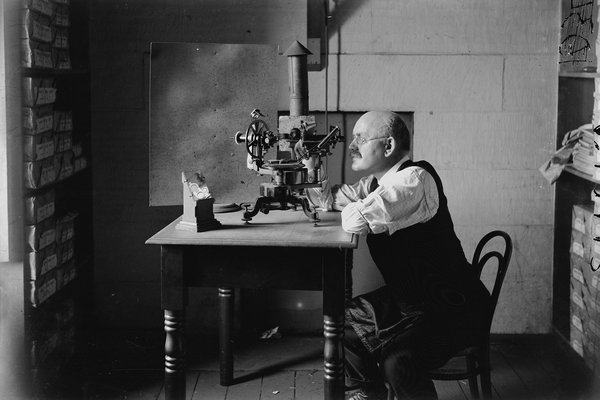The 1964 Australian-American meteorite expedition
A Photographic Archives Digitisation Project discovery.
In 1963, Mr Elliot Price received an unusual telegram inquiring if the salt basin near the edge of his Muloorina outback property would be suitable for Donald Campbell to race on to attempt a new Land Speed World Record. The basin in question was Lake Eyre, officially known as Kati Thanda–Lake Eyre by the Traditional Owners of the Lake Eyre Region (Kati-Thanda), the Arabana people, which sits in one of the most arid and deserted parts of outback South Australia. While Campbell attempted to break the world record in 1963, efforts were paused with rainfall and flooding. It was only in 1964 where Campbell set a new land speed world record of approximately 403.1 mph.
This unique spectacle was photographed by none other than Robert ‘Oliver’ Chalmers and museum staff during the 1964 Australian-American Meteorite Expedition. These 35mm colour slides were recently discovered by the Photographic Archives Digitisation Project in the newly digitised Chalmers collection which comprises of both personal and departmental photographs in addition to personal diaries, correspondence, research papers and publications as well as papers relating to the Gem Association of NSW and Australian Museum Minerals Department administration and history.
In 1964 Chalmers accompanied Dr Brian Mason of the American Museum of Natural History, and Dr Ed Henderson of the Smithsonian Institute in the USA, on a second meteorite searching expedition to South and Central Australia. Although no great success was met in respect to meteorites, a very considerable number of australites were found on an expedition navigating through Muloorina, Clayton, Peachawarrina, Etadunna, Coopers Creek and most significantly Kati Thanda–Lake Eyre.
The Kati Thanda–Lake Eyre Basin was used as the location of Campbell’s attempt from 1963-1964 to break the record as it had approximately 725 kilometres of dried salt where a drought had lasted over 20 years. In 1963 efforts to construct the causeway were often postponed by sudden rainfall and threats of flooding from the Cooper Creek and Diamantina River in Queensland where Campbell would remove the Bluebird as precaution to avoid being marooned on the lake. In 1964, work recommenced and a new track called “Hobson’s Choice” was constructed with the salt surface level making it in a good condition for trial runs.
Approximately two million pounds (contributed from 70 British firms), went into the design and construction of the jet-powered car and preparation costs of the event. There were close to 100 people at Kati Thanda–Lake Eyre until the Australian Defence Force and South Australian Police arrived where daily numbers reached close to 200, making food and other supplies difficult to retrieve from Adelaide.
This hidden story behind analogue photography is one of many that is championed by the Photographic Archives Digitisation Project, and it is with great hope that all members of the AM and greater public can view the vast timeline of the Museum and forgotten regional and rural areas of Australia (and neighbouring countries) from c.1860 to 1999.


















